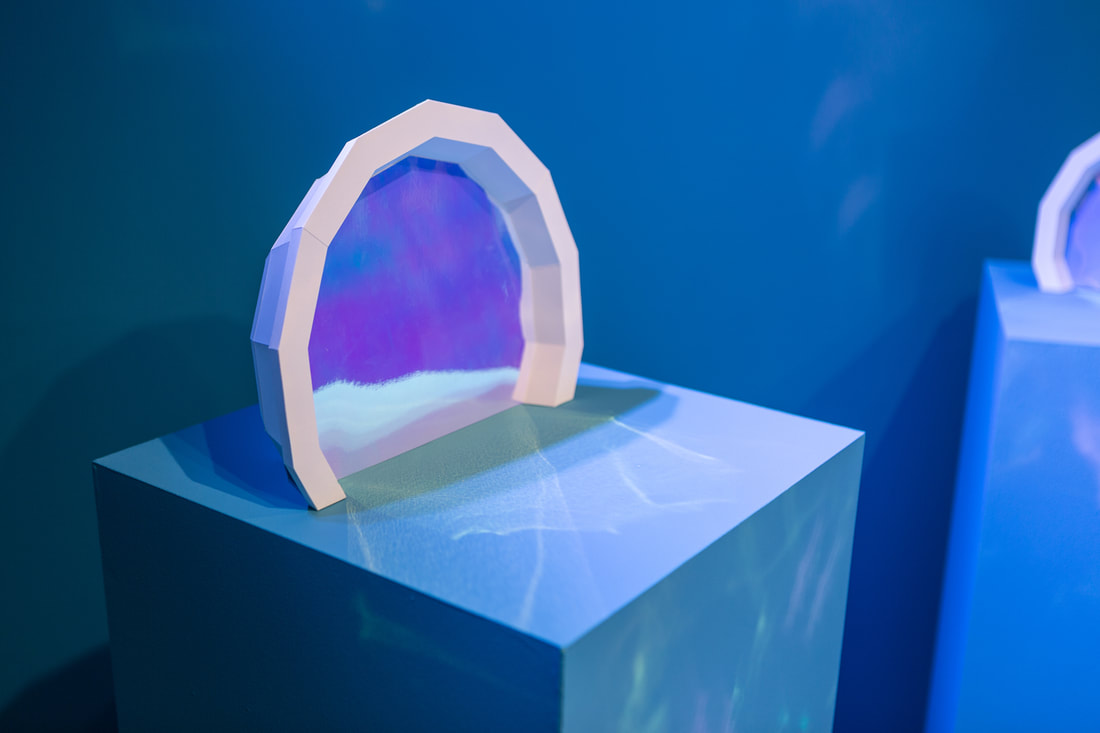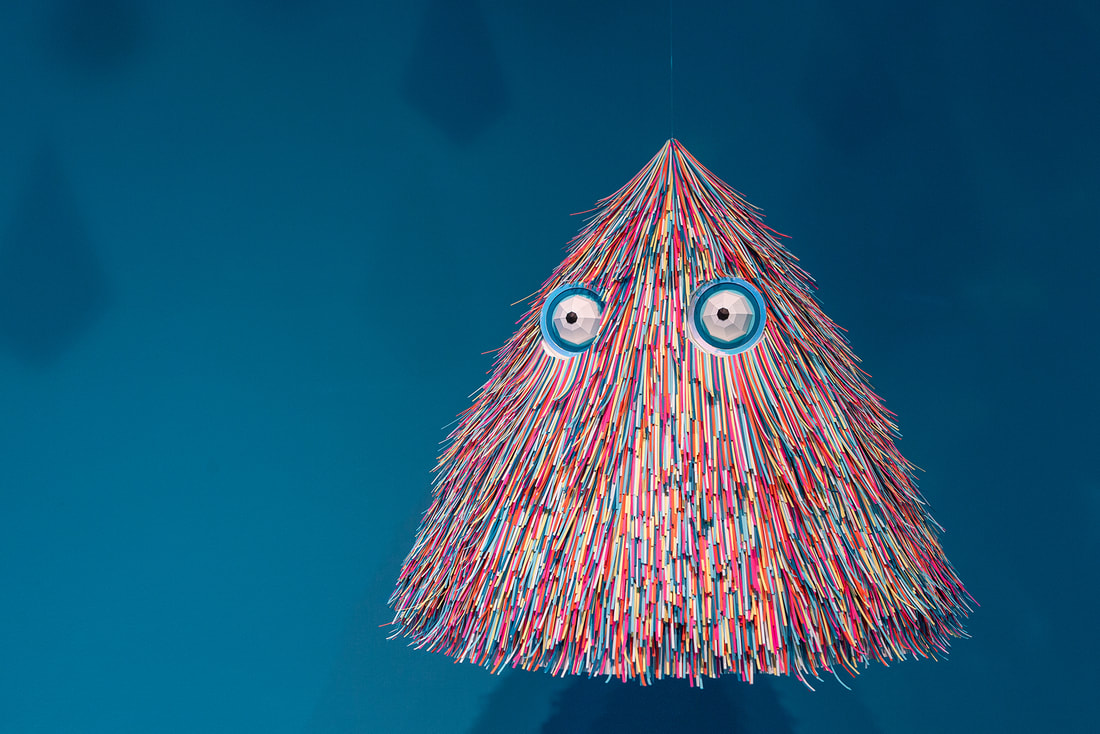We Bathe Here
Artwork & Text by Cat Lamora
It’s hard to place what my first memory of a mokyoktang is. Was it the thick steam, or the grainy stone tiles under my toes? Or was it the familiar, slightly sweet, musty smell of all the human bodies that saturate the air? All my memories of this place, through different times, different bathhouses, seem to blend together into one.
Stepping into a hot bath was one of the most intense moments for me as a child. The scalding water would burn what felt like each and every cell, making them all vibrate and leaving my feet feeling like TV static. I’d stand there and breathe through my teeth, waiting for the pain to subside. The water seared me to the bone, yet I could never turn away from it. The bathhouse spoke to me. It always echoed faint, familiar voices—perhaps the voice of the vegetable lady whose shop I would sit in after school and learn about ginger root, or the voice of the supermarket lady who would sell me 10-cent packets of gum and tell me to spit it out before bed lest I get gum all over my hair again.
Then, there was the body scrubber. She awaited customers in her searing red, lacy undergarments. She took pride in her scrubbing towels and skills, and once you lay down on the PVC-covered scrubbing table, you would enter her domain. Her hands were knotted and strong. No amount of yelps would get her to ease up, and each scrub left behind big strips of red skin behind. In a time when milk was still a little rare and expensive, you knew she took a liking to you if she saved you a milk container that was a day past the expiration date, and poured it over your body—a luxurious ritual before the brutal but satisfying scouring.
While laying on the rubbery, bubble gum pink dais and looking up at the ceiling, I would see a myriad of water droplets getting heavier and heavier from the steam in the air. Pain was immaterial when awe overtook the mind. The drops always looked like they were a moment away from falling, but it was never quite time. I felt like I could see my entire life in an infinite loop within these droplets, amor fati, the eternal recurrence—the world around me reflected entirely within these tiny half spheres. An uncountable number of domed mirrors and an endless number of bathhouses that mirrored my own.
Perhaps here was the moment that my memories of mokyoktangs—all the bathhouses that I had been to and those that were to come—bled and blended into each other. I wish I could tell you. I wish I could give you this vignette of a memory, this fragile and layered and confusing network of thoughts, sights, and smells frozen in opal—something new that glints each and every way you look at it. But alas, the best that I can do is create and recreate and regurgitate this memory from behind my eyes and try to recreate this compounded, tangled mess with these hands.
These bathhouses are slowly fading into history, but the stories of the residents who frequented them may still be written in the steam and echo within these old bathhouse pools—and perhaps mine is forever intertwined with theirs, in that searing, frozen opal of mine.
Stepping into a hot bath was one of the most intense moments for me as a child. The scalding water would burn what felt like each and every cell, making them all vibrate and leaving my feet feeling like TV static. I’d stand there and breathe through my teeth, waiting for the pain to subside. The water seared me to the bone, yet I could never turn away from it. The bathhouse spoke to me. It always echoed faint, familiar voices—perhaps the voice of the vegetable lady whose shop I would sit in after school and learn about ginger root, or the voice of the supermarket lady who would sell me 10-cent packets of gum and tell me to spit it out before bed lest I get gum all over my hair again.
Then, there was the body scrubber. She awaited customers in her searing red, lacy undergarments. She took pride in her scrubbing towels and skills, and once you lay down on the PVC-covered scrubbing table, you would enter her domain. Her hands were knotted and strong. No amount of yelps would get her to ease up, and each scrub left behind big strips of red skin behind. In a time when milk was still a little rare and expensive, you knew she took a liking to you if she saved you a milk container that was a day past the expiration date, and poured it over your body—a luxurious ritual before the brutal but satisfying scouring.
While laying on the rubbery, bubble gum pink dais and looking up at the ceiling, I would see a myriad of water droplets getting heavier and heavier from the steam in the air. Pain was immaterial when awe overtook the mind. The drops always looked like they were a moment away from falling, but it was never quite time. I felt like I could see my entire life in an infinite loop within these droplets, amor fati, the eternal recurrence—the world around me reflected entirely within these tiny half spheres. An uncountable number of domed mirrors and an endless number of bathhouses that mirrored my own.
Perhaps here was the moment that my memories of mokyoktangs—all the bathhouses that I had been to and those that were to come—bled and blended into each other. I wish I could tell you. I wish I could give you this vignette of a memory, this fragile and layered and confusing network of thoughts, sights, and smells frozen in opal—something new that glints each and every way you look at it. But alas, the best that I can do is create and recreate and regurgitate this memory from behind my eyes and try to recreate this compounded, tangled mess with these hands.
These bathhouses are slowly fading into history, but the stories of the residents who frequented them may still be written in the steam and echo within these old bathhouse pools—and perhaps mine is forever intertwined with theirs, in that searing, frozen opal of mine.
Cat Lamora is a Korean-Canadian paper artist based in Toronto. Through the fragile and temporary medium of paper, their work strives to preserve the brief liminal space created at the crossroads of diaspora consciousness, memory, culture, and nostalgia, examining how each lived experience constructs the building blocks of identity. | Website: catlamora.com, IG: @catlamora






